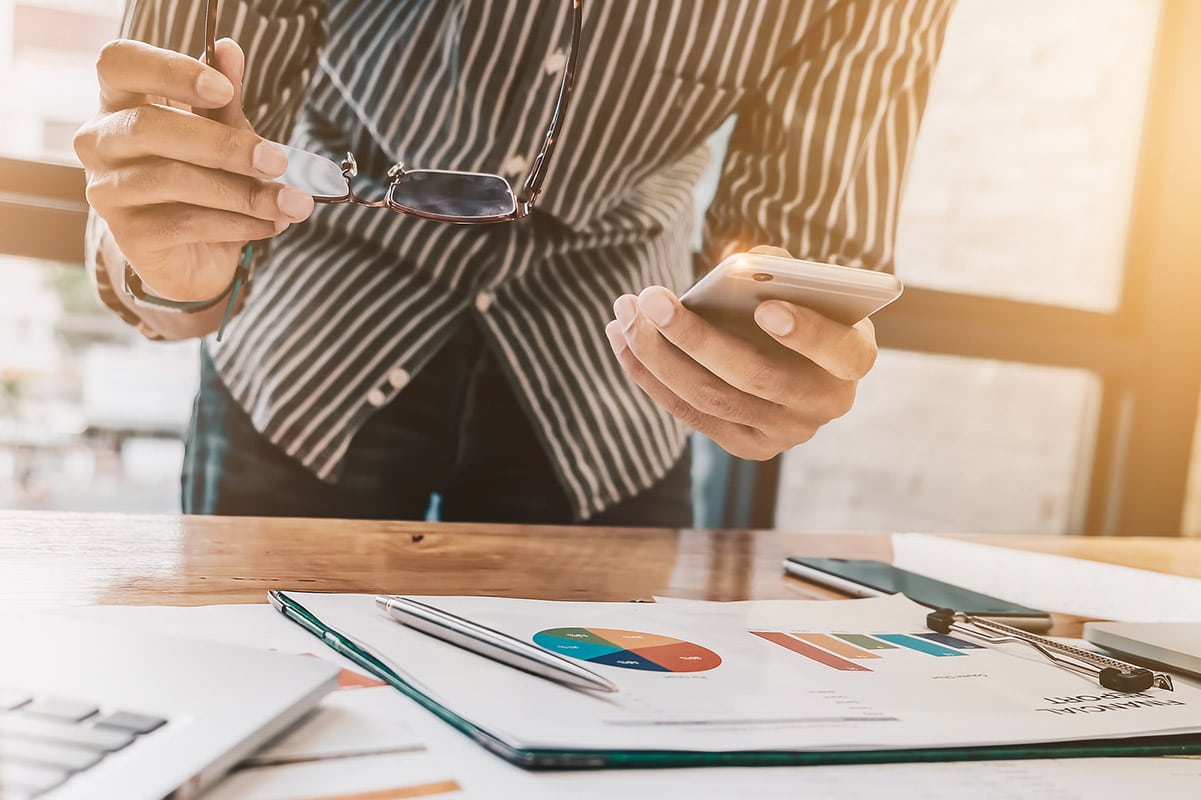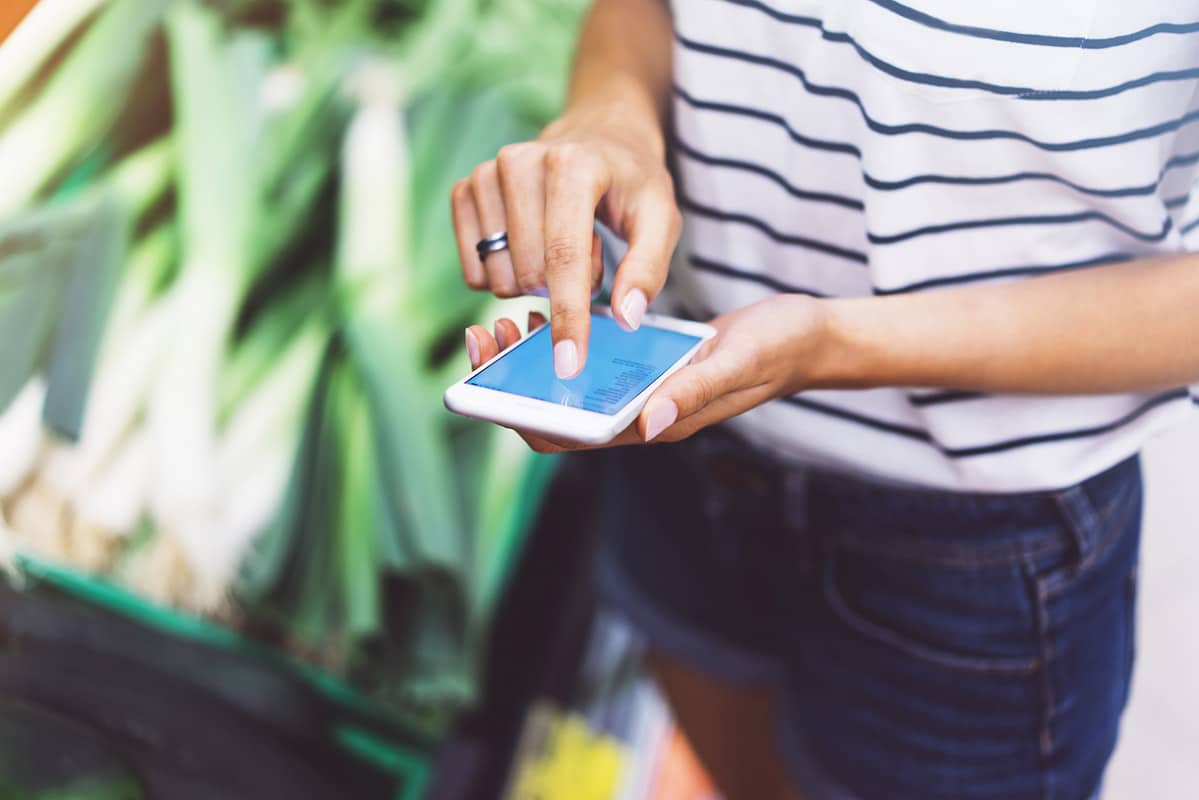The CPG ecommerce trends shaping the 2018 consumer packaged goods landscape
Now is a very important time for the consumer packaged goods industry, as the CPG ecommerce trends taking shape in 2018 will impact the entire market for years to come. These trends have already altered the customer’s path to purchase and have made room for new market entrants. Now, challenger brands are better able to compete with big household names, as they’re capable of connecting with the growing market of online-focused consumers. The current climate of change in the CPG industry means that brands must be prepared to use ecommerce to gain online sales and drive brick-and-mortar business.
CPG brands used to be heavily invested in brand recognition, but as consumer loyalty shifts, recognition alone is no longer as powerful as it once was. Instead, consumers are seeking alternatives to popular brands, and big name brand recognition is becoming less of a deciding factor in the path to purchase. Tech also increasingly plays a role. To reach consumers who have the option to choose between myriad options, and who demand the convenience of ecommerce purchasing, brands should also deliver high tech experiences as part of their CPG marketing.
Ecommerce is Essential to CPG Brands
Fast moving consumer goods (FMCG) is a growing market for ecommerce sales. Online sales in this category jumped to $74 billion last fiscal year due to both new market entrants and increased global access. While online sales makes up only a fraction of the $771 billion market, it also represents high growth in the segment. Online sales were responsible for 90% of the CPG market’s overall growth.
What we can understand from such data is:
Ecommerce has the highest growth potential:
Since the majority of growth in the CPG industry occurred via online channels, it is clearly where brands can focus when looking to reach new markets. Ecommerce also makes it possible for consumers in remote global regions to connect with brands, a huge area of opportunities for CPGs.
New markets begin online:
Many new markets are emerging in CPG ecommerce, including offerings like meal prep kits and online groceries, both of which are major contributors to the increases seen in fast moving consumer goods. Ecommerce has opened up a wealth of services and products that many consumers had never considered purchasing online before.
Online CPG ordering is moving toward the mainstream:
The rapid growth of purchases of small, inexpensive items online indicates that consumers are growing more comfortable with paying for shipping and waiting on delivery.
These three factors are significant for the CPG industry as a whole. In the past, consumers were less enthusiastic about making small purchases online, due to shipping costs. At the same time, it was a lose-lose scenario for retailers, as offering ecommerce for small, low-cost items was an expense that outweighed the benefit. As shipping costs decreased and online purchases increased, this market became a prime place for ecommerce growth. Much of this can be attributed to how ecommerce changed the consumer’s path to purchase.
A Revision of the Consumer’s Path to Purchase
In the past, the path to purchase was very straightforward: Demand for a product led to brand discovery; brand discovery led to interest, which was followed by purchase. However, this process has become increasingly complex in the digital marketplace. Essentially, the entire course has become cyclical.
The new steps that have become very prominent throughout it are:
Roundabout to word-of-mouth:
Consumers often discover their need for a brand or product as a result of an online discussion. Consider the case of a forum for new mothers, where one mother asks for advice on diaper rash. Another mother may recommend a specific cream or ointment, which could drive a discussion of the brand.
In-store evaluations:
Based on a Nielsen study, 75% of grocery shoppers have used a physical store to evaluate a product before purchasing it online. Consumers may be increasing their online purchasing, but that doesn’t change their desire to physically interact with products.
Plan:
Whether they’re shopping online or shopping in a store, consumers purchasing CPG items tend to plan their shopping trips in advance, which means brands must optimize their ecommerce experience to ensure it works equally well in connecting with consumers in the shopping aisle as it does in connecting with them online.
Another thing about these steps is that they can occur at different points in the path to purchase. A consumer may plan to purchase a product, then discuss it online, then evaluate it, then discuss it again before making a purchase. This change in the path to purchase is largely due to technology, but also a reflection on growing shopper demographics.
Changing Demographic Desires in the Marketplace
In the broadest of terms, different generations are motivated to make CPG purchases for different reasons. While not all members of one demographic will behave the same, studies have shown that certain behaviors can be anticipated based on overall generational preferences. For instance, grocery sales are often driven by CPG sales, and trends in the grocery market reveal both which generations spend the most on CPG, and how they make purchase decisions:
Silents:
These individuals, age 72 and up, are often motivated by value. They are also less likely than any of the other groups to embrace technology in shopping. Ironically, they’d be the most likely to benefit from this technology, due to issues with physical mobility and travel.
Baby Boomers and Generation X:
Together, these generations spend the most on groceries. Both are also considered proficient in technology as they’re likely to use it in their jobs. These groups are likely to look to ecommerce when seeking information on CPG products, although for the most part will continue to make CPG purchases at brick-and-mortar locations.
Millennials:
While they don’t spend as much on groceries as Generation X and Boomers, they are highly motivated to use technology while shopping. That makes ecommerce an area of high potential in this demographic. In addition, millennials often use their mobile phones while in brick-and-mortar locations to assist them in making purchase decisions. A shopping app, like Shopkick, can be used to connect with these tech-driven consumers, both online and off.
Data around grocery sales are important as they tell us who is doing the shopping in the household and where they’re buying. These statistics show us whether CPG consumers prefer ecommerce or in-store purchasing and, specifically, what they demand from brands. Challenger brands commonly leverage consumer demand to gain market CPG share.
Online Access Drives the Rise of Challenger Brands
Challenger brands are unique. While they may not be market leaders, challenger brands are able to connect with consumers to gain market share. Part of the reason these brands are emerging as competition to larger brands is because growth of ecommerce has given them access to new markets. These brands may not offer a new product, but they may offer it in a new way, which gives them the ability to challenge even the largest names in the market.
Because the Internet evens the playing field between challengers and big brands, CPG challenger brands thrive on ecommerce platforms. They may not have the funding of big brands, but challengers can get by on a grassroots campaign by using the digital space to share their message. They can also take a direct-to-consumer approach, allowing them to provide customers the personalized shopping experience they crave, and earning the brand consumer loyalty.
Consider Lavazza Coffee, a high-end Italian coffee brand that was able to gain attention in the U.S. market by connecting directly with consumers. While the brand had a significant following in its home country of Italy, it struggled to gain a foothold in the crowded U.S. market.
The brand took a direct-to-consumer approach and connected with their target demographics at events and in privileged settings. Lavazza partnered with both the U.S. Open and the Guggenheim Museum in New York to “create an aura of eliteness.” At the events, the company offered branded packaging, like cups and napkins, which could be used to direct consumers to its website to make direct sales. The brand left the digital space to connect with their consumers in their places.
Lavazza is able to compete in the highly competitive U.S. coffee market strategies such as:
Focus on the consumer:
The brand connects directly with consumers by sponsoring high-end events and then uses them to drive sales both at online stores and through retailers like Target and the Seattle Coffee Company.
Position brand as elite:
Lavazza has a higher price point than other coffees and uses its Italian background to set itself apart from other high-end coffee brands.
Educating consumers:
On the brand’s ecommerce site, consumers can review the blends and learn about things like coffee profiles, roasting styles, and intensity ratings. Consumers don’t go to the site only to buy coffee, but also to learn about coffee from industry experts.
Lavazza doesn’t ignore brick-and-mortar locations in favor of ecommerce, but connects with the right audience in the right place. As a result, it is able to challenge big U.S. based coffee companies even when Lavazza’s product is at a higher price point.
How CPG Ecommerce Trends Impact Brick-And-Mortar Shoppers
Brick-and-mortar can act as a pathway to ecommerce—and vice versa. For example, a consumer may discover a product in an ecommerce site and then decide they want to see it in the store before they make a purchase. Or, they may seek out an ecommerce product and not want to wait for shipping, so they go to the store instead. There’s also a hybrid of this where a consumer will order an item online and pick it up in store.
All of these methods show us that ecommerce isn’t just an access point for product purchase but is a route to product discovery. Brands can gain consumer attention by delivering experiences that work equally well in the digital world as they do in the physical one and thereby make the most of both markets.
One way to deliver experiences that work in both the real world and the digital world is through the use of retail shopping apps, like Shopkick. A good shopping app can allow a brand to incentivize purchases both at online stores and in brick-and-mortar locations. Shopkick uses this multi-channel strategy by allowing consumers to gain rewards, known as kicks, for interacting with brands in-store or for viewing specific content, like advertisements, online. This hybrid approach works well for addressing consumers in the CPG market, whose purchase avenues have grown extensively in the past few years.
CPG brands are often challenged by the direct-to-consumer approach as these brands have primarily focused on selling through retailers. However, the things that attract consumers in a store are the same things that attract them to ecommerce. They also enjoy being rewarded for interacting with brands.
These emerging CPG ecommerce trends do not have to act as industry disruptors. Instead, they allow CPG brands to enhance their relationships with customers and create true brand affinity, whether that consumer is ordering directly from a brand or through an online retailer. The largest potential for market growth in CPG is based on marketing to tech-savvy consumers who buy these products many different ways. Using shopping apps to assist consumers through the new, more complex path to purchase is the best way to leverage these CPG ecommerce trends.
Shopkick helps our partners in the CPG industry stand out in the crowded ecommerce space. To gain consumer attention on our platform, contact us.


